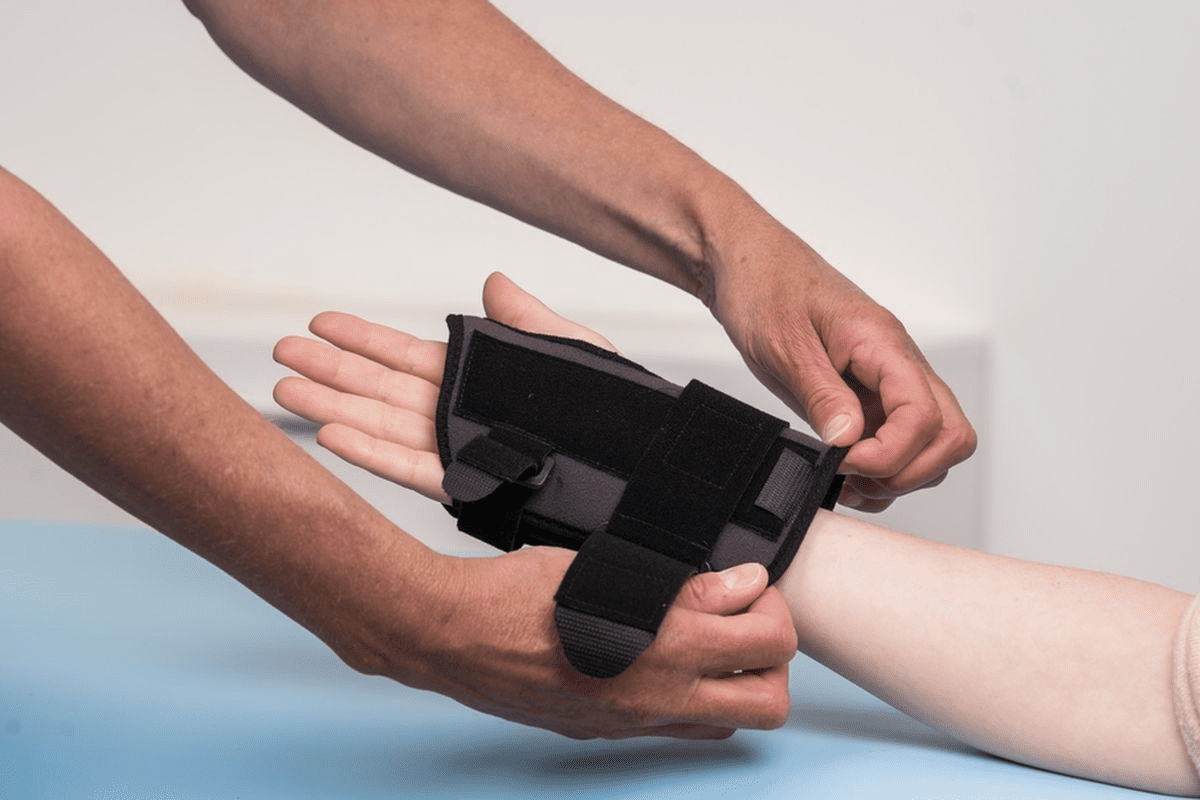Last Updated on November 26, 2025 by Bilal Hasdemir

Every second matters when it comes to a heart attack. At Liv Hospital, we’re dedicated to top-notch healthcare. We offer full support and guidance for international patients.
We use PCI, fibrinolytics, and bypass surgery to quickly fix blood flow. The right treatment depends on the heart condition. It might include medicine, balloon angioplasty, stenting, surgery, or a mix of treatments.
Having a heart attack changes your life. Our aim is to give you the best care. We want to help you make smart choices about your health in real life.
Key Takeaways
- Rapid restoration of blood flow is critical in treating a heart attack.
- Liv Hospital offers world-class expertise in heart attack treatment.
- Treatment options include PCI, fibrinolytics, and bypass surgery.
- The type of heart attack determines the most suitable treatment.
- A combination of therapies may be used to treat a heart attack.
Understanding Heart Attacks: Types and Risk Factors

Heart attacks are serious and need quick action. Knowing the types and risk factors is key for treatment. A heart attack happens when blood flow to the heart stops, damaging the heart muscle.
What Happens During a Heart Attack
A heart attack blocks blood flow to the heart. This starves part of the heart muscle of oxygen. The damage can be permanent or fatal, depending on how long the blockage lasts and the heart area affected.
STEMI vs. NSTEMI: Different Types of Heart Attacks
There are two main heart attack types: STEMI and NSTEMI. STEMI has a complete blockage, causing major damage. NSTEMI has a partial blockage, leading to less damage but needing quick medical help.
| Characteristics | STEMI | NSTEMI |
| Blockage Severity | Complete blockage | Partial blockage |
| ECG Changes | ST elevation | No ST elevation |
| Damage Extent | Significant damage | Less damage |
Recognizing Heart Attack Warning Signs
Knowing heart attack warning signs is critical. Look for chest pain, shortness of breath, dizziness, and pain in arms, back, neck, jaw, or stomach. Quick action can greatly improve treatment outcomes.
Key Warning Signs:
- Chest pain or discomfort
- Shortness of breath
- Dizziness or lightheadedness
- Pain or discomfort in arms, back, neck, jaw, or stomach
Understanding these signs and heart attack types helps people get medical help fast. This can save lives.
The Critical Timeline: Why Rapid Response Saves Lives

Time is key when it comes to heart attacks. Quick action can mean the difference between life and death. Getting medical help fast is vital to save lives and reduce heart damage.
The idea of a “golden hour” is very important for heart attacks. It’s the first hour after symptoms start. During this time, medical help can make the biggest difference.
The Golden Hour Concept
The golden hour is all about getting medical help within the first hour of symptoms. Research shows that those treated quickly have better results and fewer complications.
90-Minute Door-to-Balloon Time Goal
Hospitals aim for a 90-minute door-to-balloon time for heart attack treatments. This goal is key to ensure patients get timely treatment to restore blood flow.
To show why quick treatment matters, let’s look at some data:
| Time to Treatment | Outcome |
| Within 90 minutes | Optimal outcome, minimal damage |
| 90-180 minutes | Moderate damage, possible complications |
| More than 180 minutes | Significant damage, higher risk of death |
Impact of Delayed Treatment on Heart Muscle
Waiting too long for treatment can cause serious heart muscle damage. This can lead to long-term problems and a higher chance of death. It’s critical to seek medical help right away if symptoms don’t get better or get worse.
Rapid response is not just for doctors. It’s also about recognizing symptoms and acting fast. By understanding the importance of quick action, we can all help save lives and improve outcomes.
Emergency Heart Attack Procedure Protocol
When a heart attack happens, we quickly act. We know that fast and right treatment is key to saving lives and reducing heart damage.
First Response and EMS Activation
We start by calling Emergency Medical Services (EMS). We stress the need to call for help right away if you think you’re having a heart attack. Working with EMS, we make sure patients get the best care from the start.
Key actions during the first response include:
- Calling EMS or the local emergency number
- Providing as much information as possible about the symptoms and medical history
- Following any instructions given by the EMS dispatcher
Initial Hospital Assessment and Diagnosis
When you get to the hospital, we quickly check you over. This includes:
- Electrocardiogram (ECG) to check the heart
- Blood tests to look for heart damage signs
- Imaging tests like chest X-rays or echocardiograms
These tests help us figure out what kind of heart attack you’re having. This guides how we treat you.
Determining the Appropriate Treatment Path
After we know what’s going on, we choose the best treatment. This might be:
| Treatment Option | Description | Typical Application |
| Clot-dissolving medications | Thrombolytic therapy to dissolve clots | When PCI is not immediately available |
| Balloon angioplasty and stenting | Primary Percutaneous Coronary Intervention (PCI) to open blocked arteries | Preferred treatment for STEMI patients |
| Surgery | Coronary Artery Bypass Grafting (CABG) for complex cases | When PCI is not suitable or has failed |
We pick the best treatment for each patient. We look at their medical history, how bad the heart attack is, and other important things.
Primary Percutaneous Coronary Intervention (PCI)
For those with a STEMI heart attack, primary PCI is the top choice. It uses a catheter to open the blocked artery. Then, a stent is placed to keep it open.
The Gold Standard for STEMI Treatment
Primary PCI is the best treatment for STEMI heart attacks. It quickly gets blood flowing to the heart. This reduces damage to the heart muscle.
We do this in a special area called a cath lab. A team of skilled cardiologists and technicians work together to get the best results.
The Heart and Stroke Foundation says primary PCI is the best choice for STEMI when it’s available fast.
Angioplasty and Stenting Techniques
During primary PCI, angioplasty is used to widen the blocked artery. A small balloon on the catheter is inflated to push aside the plaque. This restores blood flow.
Then, a stent is placed to keep the artery open. This reduces the risk of it narrowing again.
The mix of angioplasty and stenting has greatly improved STEMI patient outcomes. It leads to quicker recovery times and less risk of complications.
Expected Outcomes and Success Rates
The success rate of primary PCI is very high. Most patients see a big improvement after the procedure. It reduces the risk of complications and improves survival rates.
We watch patients closely after the procedure. This ensures they’re recovering well and handles any complications quickly.
Fibrinolytic Therapy: Clot-Busting Medications
Fibrinolytic therapy is a key treatment for heart attack patients. It’s used when immediate primary PCI isn’t possible. This therapy uses clot-busting drugs to dissolve the blood clot causing the heart attack.
Dissolving Clots with Thrombolytic Drugs
Thrombolytic drugs, or fibrinolytics, start the body’s natural clot breakdown. They target fibrin clots, dissolving them and improving blood flow to the heart. Quick use of fibrinolytic therapy can greatly help heart attack patients.
Key benefits of fibrinolytic therapy include:
- Rapid restoration of blood flow to the heart
- Reduced risk of complications when PCI is delayed
- Improved survival rates for heart attack patients
When Fibrinolytics Are Preferred Over PCI
Fibrinolytic therapy is best when PCI is not quickly available. This choice depends on how long symptoms have lasted, the patient’s health history, and PCI facility availability.
The decision to use fibrinolytic therapy is typically made when:
- The time from symptom onset to medical contact is within a certain window (usually 12 hours)
- PCI is not available within 90 minutes of medical contact
- The patient has contraindications for PCI or is at high risk for complications
Administration Protocol and Timing
Administering fibrinolytic therapy needs careful timing and protocol. The aim is to start treatment as soon as possible after diagnosing a heart attack, ideally within 30 minutes of arrival.
Key aspects of the administration protocol include:
- Rapid assessment of the patient’s condition and medical history
- Selection of the appropriate fibrinolytic agent
- Monitoring for possible complications or adverse reactions
Understanding fibrinolytic therapy’s role in heart attack treatment helps healthcare providers make better decisions. This improves patient care and outcomes.
Medication-Based Treatment Options
Medication is key in treating heart attacks. At our institution, we use many medicines to care for our patients fully.
Antiplatelet Medications
Antiplatelet drugs stop new clots and lower heart attack risk. Aspirin is given first, then clopidogrel or ticagrelor.
These drugs stop platelets from sticking together. Using more than one drug is better at preventing heart problems.
Anticoagulants and Blood Thinners
Blood thinners prevent new clots and stop old ones from growing. Heparin is used right away, and warfarin for longer.
New blood thinners like rivaroxaban and apixaban have fewer side effects.
Pain Management and Supportive Medications
Managing pain is key in heart attack care. It reduces stress and anxiety. Morphine is often used for its pain relief and calming effects.
Other medicines include beta-blockers to lower heart work, ACE inhibitors to help the heart, and statins to lower cholesterol.
| Medication Type | Examples | Purpose |
| Antiplatelet | Aspirin, Clopidogrel, Ticagrelor | Prevent platelet aggregation |
| Anticoagulants | Heparin, Warfarin, Rivaroxaban | Prevent new clot formation |
| Pain Management | Morphine | Relieve pain and anxiety |
Coronary Artery Bypass Grafting (CABG) Surgery
CABG surgery is a complex method to fix blocked heart arteries. It helps blood flow to the heart muscle. This is key for those with many blockages or complex heart disease.
Indications for Bypass Surgery
We suggest CABG for those with big blockages in many arteries. It’s best when other treatments don’t work. Key reasons include:
- Multiple vessel disease
- Complex coronary anatomy
- Failed angioplasty or stenting
- Diabetes with multi-vessel disease
These cases often need a more detailed surgery to improve blood flow to the heart.
The Surgical Procedure Explained
In CABG surgery, we use a healthy blood vessel from another part of the body. We attach it to the blocked artery. This way, blood can go around the blockage, feeding the heart.
The steps are:
- Harvesting a graft vessel (often from the leg or chest)
- Connecting the patient to a heart-lung machine
- Attaching the graft to bypass the blocked section
- Restoring blood flow and checking the graft’s functionality
Recovery Timeline After CABG
Recovering from CABG takes time. Patients start in the ICU and then move to a step-down unit. The recovery time varies, but usually:
- Hospital stay ranges from 5 to 7 days
- Full recovery at home can take 6 to 12 weeks
- Return to normal activities is typically achieved within 3 months
Following post-op instructions and cardiac rehab is vital. It helps ensure a good recovery and keeps the heart healthy long-term.
Treatment Approaches for Mild Heart Attacks
We use different treatments for mild heart attacks. These heart attacks are called Non-ST-Elevation Myocardial Infarction (NSTEMI). They need a special care plan.
Conservative Management Strategies
First, we use conservative management strategies. This means we focus on keeping the patient stable. We give them medicines to stop clots and thin the blood.
We also watch them closely. This helps us catch any changes fast. Then, we can change the treatment to help them get better.
Monitoring Protocols for Small Heart Attacks
For small heart attacks, we have special monitoring protocols. We check their heart with ECGs and blood tests. We also watch their symptoms closely.
This way, we can see if the treatment is working. If not, we can change it to help them more.
Determining When Intervention is Necessary
Figuring out when to do more is key for mild heart attacks. Sometimes, just watching and treating is enough. But other times, we need to do more like angioplasty or CABG.
We make this decision based on how the patient is doing and test results. We always think about what’s best for them.
Post-Heart Attack Procedure Care
The journey to recovery starts with careful post-heart attack care. After a heart attack, our team watches over you closely. We make sure your recovery goes smoothly.
Immediate Post-Procedure Monitoring
We keep a close eye on patients right after their heart attack procedure. This immediate care is key to spotting and handling any problems early.
Our team checks vital signs, looks for signs of distress, and manages pain well. This attention helps solve any issues quickly.
Cardiac Care Unit Management
Patients start in the cardiac care unit, where we watch their condition closely. This unit has the latest technology and skilled staff focused on heart care.
We give personalized care to meet each patient’s needs. Our aim is to stabilize their condition and avoid more problems.
Transition to Step-Down Units
As patients get better, they move to step-down units. These units offer less intense care but with the needed medical watch.
In this phase, we prepare patients for their next steps, like more rehab or going home. Our team works with patients and their families for a smooth transition.
Cardiac Rehabilitation and Recovery
Recovering from a heart attack takes a full effort. Cardiac rehabilitation is a big part of it. It helps improve heart health and overall well-being.
Structured Rehabilitation Programs
Cardiac rehabilitation is more than just working out. It’s a structured program for heart attack recovery. It includes exercise, education, and lifestyle advice. Our programs are made for each patient, giving them the support they need to get better.
Physical Activity Guidelines
Physical activity is key in cardiac rehab. We start with low-intensity exercises and then increase them. This helps improve heart health and boosts stamina.
Lifestyle Modifications for Heart Health
Making lifestyle changes is vital for heart health. This includes eating right, managing stress, and quitting smoking. These changes can greatly lower the risk of future heart issues.
| Component | Description | Benefits |
| Exercise Training | Supervised exercise sessions tailored to the patient’s condition | Improves heart health, increases stamina |
| Education | Information on heart health, nutrition, and stress management | Empowers patients to make healthy lifestyle choices |
| Lifestyle Counseling | Support for smoking cessation, dietary changes, and other lifestyle modifications | Reduces risk factors for future heart problems |
For more detailed information on cardiac rehabilitation, you can visit Medical organization’s Cardiac Rehabilitation page.
Conclusion: Advances in Heart Attack Treatment
Heart attack treatment has seen big improvements in recent years. This means patients can now get better care than ever before. The way we treat heart attacks has changed a lot, thanks to new methods like Primary PCI, fibrinolytics, and CABG surgery.
At Liv Hospital, we use the latest treatments and technologies. This helps our patients get the best care possible. By knowing about these new treatments, patients can choose the right option for them.
Now, the best treatments for heart attacks are available. We at Liv Hospital are committed to giving top-notch healthcare. We also offer full support and guidance to international patients.
FAQ
What are the main types of heart attacks?
Heart attacks are mainly STEMI and NSTEMI. STEMI is when the heart muscle dies. NSTEMI is when the heart muscle is at risk but not dead yet.
What is the golden hour concept in treating heart attacks?
The golden hour is the first hour after a heart attack starts. Getting medical help in this time is key.
What is primary percutaneous coronary intervention (PCI)?
PCI is the top treatment for STEMI. It uses a catheter to open the blocked artery. Then, a stent keeps it open.
When is fibrinolytic therapy used in treating heart attacks?
Fibrinolytic therapy is used when PCI isn’t available. It uses drugs to dissolve the clot and restore blood flow.
What is coronary artery bypass grafting (CABG) surgery?
CABG surgery is for patients with many blocked arteries. It grafts a healthy vessel onto the blocked one, bypassing it.
What is the role of medications in treating heart attacks?
Medications are key in treating heart attacks. They include drugs to prevent blood clots, thin the blood, and manage pain.
What is the role of medications in treating heart attacks?
Medications are key in treating heart attacks. They include drugs to prevent blood clots, thin the blood, and manage pain.
What is cardiac rehabilitation, and why is it important?
Cardiac rehab helps patients recover from heart attacks. It includes exercise, lifestyle changes, and heart health education. It aims to improve outcomes and lower future heart risks.
What is the 90-minute door-to-balloon time goal?
The 90-minute goal is for hospitals to treat heart attacks quickly. It aims to reduce heart muscle damage.
How is the treatment approach different for mild heart attacks (NSTEMI)?
Mild heart attacks need a different approach than STEMI. They often involve medication and monitoring, not immediate surgery.
What can I expect during post-heart attack procedure care?
After a heart attack, patients are watched closely in the cardiac unit. As they get better, they move to step-down units for more care and support.
References
- QiMin, W., et al. (2020). Clinical outcomes of acute pulmonary embolectomy as the first-line treatment for massive and submassive pulmonary embolism. Journal of Cardiothoracic Surgery, 15(1), 234. https://pmc.ncbi.nlm.nih.gov/articles/PMC7576708/






